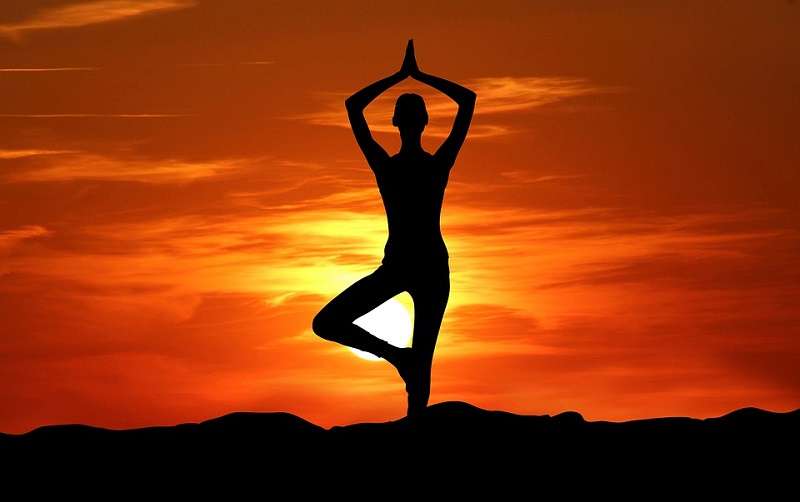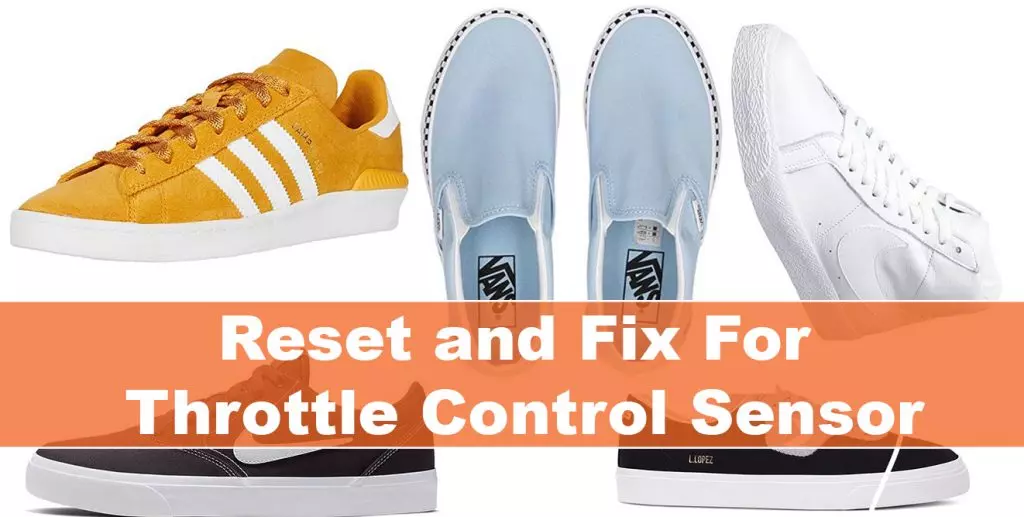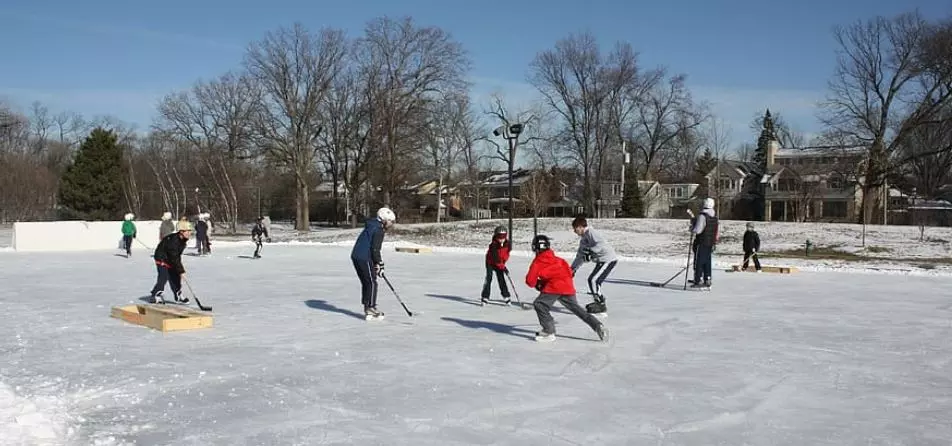Last updated on April 7th, 2022 at 09:11 pm
It’s all too easy for us to get carried away with our training and get into an obsessive mental pattern. You could choose your exercises and movements carefully and try to get more out of less. You need to stop including exercises in your programs just because they’re fashionable and focus on moving with intention instead. Figure skaters and other unilateral-dominant athletes can use this balancing maneuver for off-ice training. This isn’t exactly a game-changing move.
My objectives are to offer direction and intent to coaches and trainers for the benefit of the athletes, as well as to breathe meaning into movement prescription. Simply because an activity appears to be fun and hard does not mean it should be included in your client’s program or exercise recommendation.
How can I improve my figure skating balance?
Balance is crucial on the ice while sliding on the edge of a thin blade and in the air when leaping or being lifted in figure skating. It is critical to work on core strengths to improve balance. Your core strength is held by the muscles in your back and abdomen. They are your body’s command centers.
Balance tips
- This assists in the maintenance of stability and balance.
- This assists you in properly rotating. This implies you’ll be able to control the spin’s center of rotation well. It will be simple to maintain a tight air position while leaping.
- This will assist in maintaining adequate upper-body control. Crossovers, footwork, and stroking will become second nature to you.
- Overall, our figure skating abilities will improve over time, and you’ll be able to accomplish double leaps and more.
Steps for improving your balance:
- Lean forward with your arms out at your sides and your feet about hip-width apart.
- Squeeze your stomach in to strengthen your abdominal muscles and keep your back straight. Consider attempting to zip up a pair of too-tight pants.
- With your knees bent 90 degrees, raise your left foot off the floor behind you, and shift your weight to your right foot.
- While moving to your left leg, try to maintain balance on your right leg for as long as possible. Rep the exercise eight times more, or until your stabilizing muscles are tired.
Improve the capability once you’ve managed to keep your balance for 30 seconds on each leg. Do the single-leg balance exercise with your eyes closed or while standing on an unstable surface, such as a pillow, to make it more difficult.
Making circles in the air with the non-working leg’s foot adds to the difficulty. By transitioning between the two positions, this exercise will aid the figure skater’s take-off and landing. The arm abductors, shoulder retractors, and the posterior diagonal chain are all activated by the weight of one arm, which then communicates with the opposite hip.
Is it hard to balance on ice skates?
It should take anywhere from 7 to 10 hours to master the fundamentals of balance, depending on the skater. That wasn’t accomplished in a single day; it took two months.
It’s an hour or so once a week. It’d be great if you could go twice a week. You will be able to sleep between each practice period if you go to the rink several times, which will help you learn faster.
When you’re standing stationary, it’s nearly impossible to balance on one ice skate. However, if you simply take a small step forward, it will become second nature. One may easily glide halfway around the ice while standing on one leg.
Extend your arms to the side and slightly in front of you. As a result, they’re in the shape of a soft V. A standing stance will provide you with the most stability, and having your arms somewhat out in front will prevent you from falling to the ground.
Why do figure skaters need balance?
Because most skating is done on one leg, balance skills are an important aspect of a performance training scheme. Balance necessitates joint stability while moving, which is something that all athletes strive towards.
To improve this capability, balance training at various levels should be undertaken. Precise technique compliance across these balancing levels will aid in the improvement of all parts of training while reducing the chance of injury.
On a single track through the woods on a mountain bike, the balance and coordination required for expert skating become part of what you do. You’ll know just where to put your weight to keep it balanced. No matter how steep the uphill or downhill slope, you will seldom slip out.
How to improve balance for ice skating as a beginner
This could be the best time to put your skates on if you want to enhance your balance, leg muscles, or footwork. Skating athletes can also increase their speed by skating along curving lines on the ice, carefully moving their bodies to maintain balance and momentum.
Another thing I’ve discovered is that most individuals are afraid of momentum when they first start, particularly when they don’t know how to stop. However, consider the following when learning to skate or ride a bike:
Balance activities for beginners
- Squats are a great way to strengthen your legs and core.
- As long as humanly possible, stand on one foot. Continue to practice standing on one foot for longer periods before reverting to two feet.
- There is a wealth of information available on the internet, including on YouTube.
- Make sure you’re wearing your helmet. Maintain the safety of your head. You’re going to lose your balance and fall.
- Every single one of us does. However, because the ice is brittle and your head is softer, you must safeguard it.
While novices may struggle to stay upright on a slick ice surface at first, mastering body balance for successful skating is not difficult. Skaters that are skilled at moving across the ice dig their blades into the ice’s surface to improve friction and hence control.
Expert tip:
Begin by standing for at least one minute on one leg, then switch to the other leg and hold for 1-2 minutes. This is a dry ground activity, so no ice skates are required. Repeat this workout many times a week before attempting it with ice skates.
Wear your skates and try the one-leg workout when you go to the rinks. Begin by elevating one foot for a minute or two, then switching to the other foot for another minute or two. Push and glide if you can, then keep the gliding foot in the air for a few seconds.
What do you do with your legs like a figure skater?
A skater’s legs must be strong enough to do edgework and sequences, as well as powerful enough to launch into the air during a jump like an axel or lutz, and stable enough to land such leaps gracefully.
Skaters must first consider the sport and what the body performs while participating. For the most part, figure skating is done on one leg at a time, so this must be addressed in training.
This isn’t to mean that double-leg movements like the squat and deadlift shouldn’t be included in a workout, but single-leg strength should be prioritized. Skating favors players who are shorter, lighter, and have somewhat shorter limbs. This body type, according to Hewett, is optimal for general body control and quick spins.
To leap high, skating athletes also require a stronger lower body. However, if they have too much mass, they will be unable to fly. For example, the typical female figure skater in the United States, for example, is 5’3″ tall and weighs 108 pounds.
What are the US figure skating rules for 2020 and 2021?
A panel of judges scores you in ice skating, and the goal of the ice skater is to achieve the greatest possible score.
The quantity and quality of spins, hops and steps can be used to evaluate athletes. In pairs, the only difference is that both athletes are graded on their coordinated actions. Here are some more ice skating guidelines to be aware of:
- Costumes must not be overly ornate or show too much of the body.
- Skaters may be disqualified if they do not adhere to time limits.
- Some genres of music are prohibited.
- Athletes must change their routines from time to time.
- Tights, pants, and/or unitards are required for women.
- Pants or trousers are required for men.
- Figure skates must be worn by athletes.
What are the most vital rules of figure skating to observe?
The majority of the regulations for figure skaters are based on their ability to perform. On the ice, figure skaters must show themselves gracefully. A figure skater’s head must be kept straight and not too rigid. The figure skater’s back should not be arching forward.
Skaters’ arms must constantly flow naturally and without jarring motions. The fingers should not be clinched, formed into a fist, or seem too long. The skater’s flow and motion must be elegant, and he or she must skate at a respectable speed.
5 top-recommended, ice skating equipment for beginners on Amazon
1. Gloves
Gloves are a good idea to wear when practicing. Some skaters may not enjoy them, but the majority value the warmth and protection they provide when falling. Thick gloves will prevent you from grabbing your skate in some moves, so avoid them. Choose gloves that are light, warm, and quick to dry. You can even get gloves with built-in pads to protect your hands and wrists if you fall.
Click here to view quality glove products.
2. Skateboard guards
A pair of skate guards are an absolute must. You should put the guards on your blades as soon as you get off the ice. You won’t be able to skate if your blade is damaged even slightly, and you’ll have to buy new ones. On the ice, the blades are supposed to be. Wear the guards only when you’re walking around. Once you’ve taken them off your feet, don’t leave them on the skates!
Click here to view a quality skate guard product.
3. Socks
Numerous skaters are afraid of their feet getting cold while ice skating, so they wear thick socks. The thinner the socks, though, the better. Some skaters even skate barefoot at a high level because socks cause friction.
Wearing thin socks can help you feel your soles better and control pressure to control your movement. If you choose to wear socks, make sure they are rubbing-free. So go for thin, high-rise socks that don’t cover the entire boot, but don’t go for all-polyester socks.
Click here to view a quality product.
Skateboard shock absorbers
Your skates should not be left unprotected in a bag because the blades will be damaged, and the guards should not be used because they will trap moisture and cause rust. Your blade should be protected in the bag with skate soakers, which will absorb moisture. They’re also a must-have item for figure skaters.
Click here to view a quality product.
5. Skates for ice skating
The very first piece of equipment you’ll need is ice skates, of course. Nothing is surprising about this. However, make sure they’re appropriate for your skill level and that they’re a good fit for your feet.
When standing, is the skater’s foot flat on the skate? Is it possible to wiggle your toes a little? When you stand, the curvature of the sole should match the arch of your foot. Do your toes appear to be well-supported? The fit varies depending on the brand.
Click here to view some good skates.
What is the ice skating safety equipment to buy?
Skating necessitates the use of the proper equipment to participate and perform well. Athletes ought to have equipment that provides protection, keeps them warm, and keeps them even with their competitors in the market to participate in ice skating.
Skaters use protective equipment such as wrist pads, shin pads, and helmets to avoid falling on the hard ice. In a cold rink, athletes must also keep warm. To prevent themselves from freezing on the ice, they wear gloves, thermal clothing, and even hats. It is critical to stay as warm as possible to maintain a full range of motion. Figure skates and speed skates have a more rounded blade, whereas skates have a much more straight blade.
The best equipment for Olympic figure skating professionals.
- Soakers for skates
- Absorbent cloth or a towel
- Bag for ice skating.
- Excellent ice skates.
- Clothing that fits
- Gloves for skating
- A bottle of water
- Tightener for lace
- Covers for boots
- Bandages and pain relievers are essential first aid items.
17 awesome top balance exercises for figure skaters (list & explain each exercise)
Related article: Figure Skaters Balancing Tips&Rules+ Top-17 Balance Exercises for Figure Skaters
- Soldiers made out of plastic
- Piriformis stretch standing figure 4
- Quad stretching while walking
- Hip openers from walking
- From a standing position, the hip flexors stretch.
- Deadlift/balance on a single leg
- Squat jumps
- Lunge jumps
- Star jumps
- Skipping
- Jumps into the rotation
- Hamstring stretch while standing
- Squats like a Cossack
- Glute bridge on one leg.
- Squats in the sumo ring
- Reverse crunch with straight legs
- RDLs with only one leg
FAQ:
Why am I so bad at ice skating?
It takes years of practice to master ice skating. Although you may initially be overwhelmed, practice a few times per week. Figure skating will come naturally to you. Because you can’t see yourself, it’s difficult to assess your technique. Check to see if professional lessons are available in your area at a reasonable price. Look for flyers at your local rink or on the internet.
How long does it take to learn ice skating?
The basics should take you anywhere from 7 to 10 hours to learn. That wasn’t accomplished in a single day; it took two months. It’s an hour or so once a week. It’d be even better if you could go twice a week.
You will be able to sleep between each practice period if you go to the rink several times, which will help you learn faster. As I previously stated, it will take approximately 7 to 10 hours, depending on what you consider to be the fundamentals. The ability to glide on two feet, turn around quickly, and move forward with some control are the fundamentals I’m talking about.
How to make ice skates turn on ice skates?
To turn on the ice, stop slowly and twist your body in the direction you want to go to turn on the ice. Glide in the direction you want to go by pushing off with your leading skate.
Is it recommended to ice skate indoors?
Indoor skating is allowed. If the facility is well equipped, skating indoors would be a good idea.
What to wear for ice skating indoors?
So what would you wear? Indoor ice skating should be comfortable to skate in, made of the appropriate fabric, such as polyester, and not too thick, too tight, or too flimsy. Helmets, long pants, socks, gloves, long-sleeved shirts, neck scarves, light sweaters, knit hats, and ice skates are recommended.
Because indoor ice skating rinks can be chilly at any time of year, it’s best to dress appropriately. This should keep you warm while also protecting you from injury. You’ll learn more about what to wear and what to avoid when ice skating indoors in the rest of this guide. So let’s get started.
What to expect from first-time ice skating?
The way you dress when you go ice skating for the first time will have an impact on your first ice skating experience. Your clothing must provide you with comfort, warmth, and security. Because so many websites recommend it, this is the most common mistake people make.
People are worried about their feet getting cold. Thick socks, on the other hand, are not breathable and will restrict your movement. Your feet will become colder in the end. Furthermore, the thickness makes it difficult to maintain your balance.





